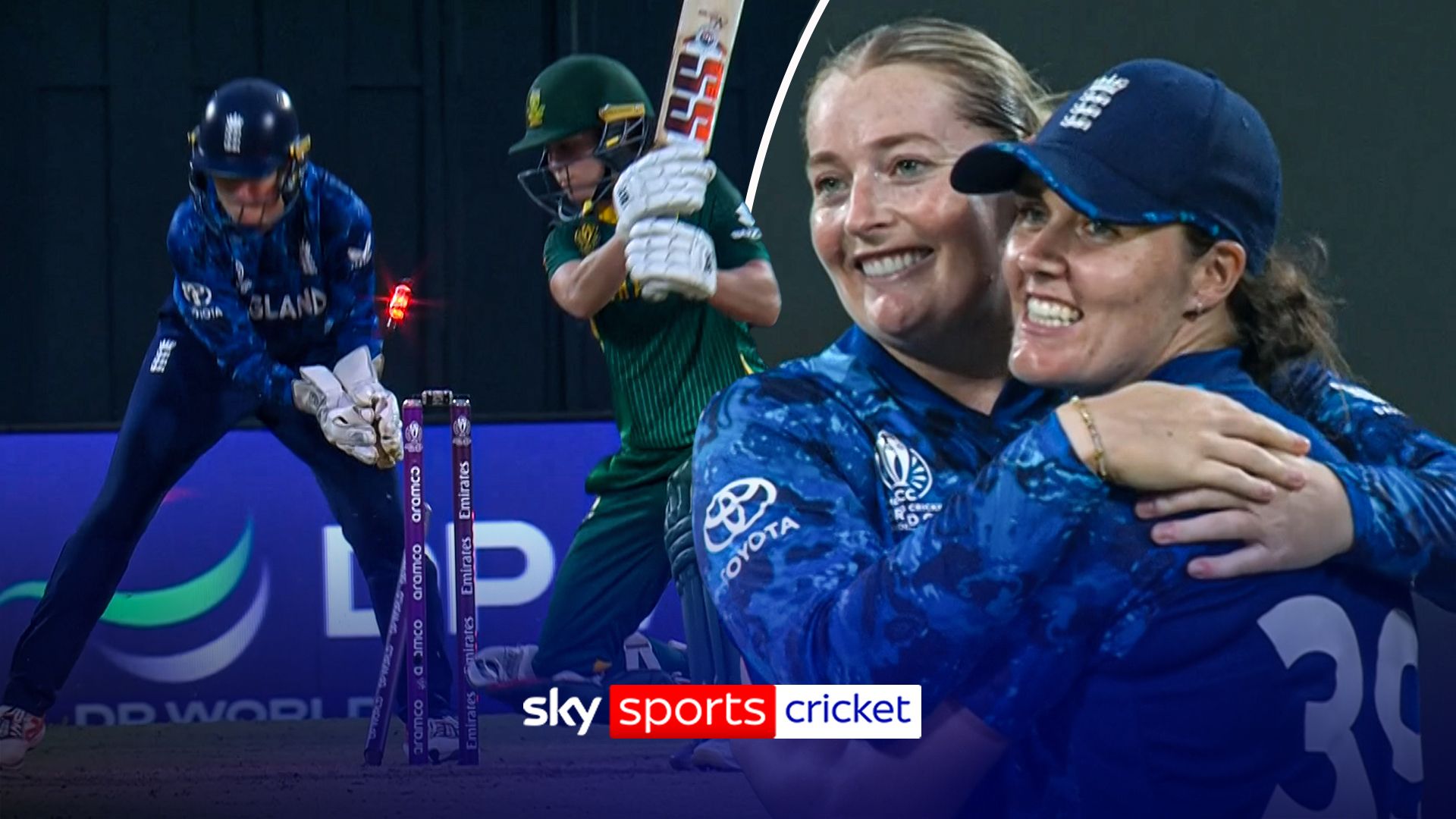Sophie Ecclestone’s Stunning Bowling Performance: A Game-Changer or Just a Fluke in the Women’s Cricket World Cup? The Debate Rages On!
Sophie Ecclestone’s remarkable performance in the Women’s Cricket World Cup semi-final against South Africa has ignited a fierce debate within the cricketing community and beyond. Her ability to take two crucial wickets in a single over not only showcased her skill but also raised questions about the nature of women’s cricket, its visibility, and the narratives that surround it.
Cricket, often dubbed a gentleman’s game, has historically been dominated by male athletes, with women’s cricket frequently relegated to the sidelines. However, Ecclestone’s exceptional display of bowling serves as a reminder that women’s cricket is not just a footnote in the sport’s history but a vibrant and competitive arena that deserves recognition and respect.
The Women’s Cricket World Cup has evolved significantly over the years, transitioning from a mere sideshow to a prestigious event that captures the attention of fans worldwide. Yet, despite this growth, women’s cricket continues to grapple with issues of funding, media coverage, and societal perceptions that often undermine its legitimacy. Ecclestone’s performance, while a personal triumph, also highlights the broader struggle for equality and recognition in sports.
As Ecclestone took down two key players from South Africa, the implications of her bowling went beyond the immediate game. It sparked discussions about the investment in women’s sports and the need for greater support from governing bodies, sponsors, and media outlets. The disparity in resources allocated to men’s and women’s cricket remains stark, with women’s teams often lacking the same level of financial backing, training facilities, and promotional opportunities.
The narrative surrounding women’s cricket has often been one of underestimation, where female athletes are viewed as less capable or less entertaining than their male counterparts. This stereotype is increasingly being challenged by athletes like Ecclestone, who are not only proving their mettle on the field but are also becoming role models for young girls aspiring to enter the sport. The visibility of such performances can inspire a new generation, encouraging more girls to take up cricket and pursue it professionally.
Moreover, the cultural significance of Ecclestone’s achievements cannot be overlooked. In a world where gender equality remains a contentious issue, her success serves as a powerful statement against the backdrop of ongoing societal debates about women’s rights and representation. The cricket pitch becomes a microcosm of the larger struggle for equality, where every wicket taken and every run scored is a step towards breaking down barriers.
The impact of Ecclestone’s performance extends into the realm of sports marketing and sponsorship. As women’s cricket gains traction, brands are beginning to recognize the potential for engagement with a diverse audience. Companies are increasingly investing in female athletes, not just as a marketing strategy but as a commitment to supporting gender equality in sports. This shift is crucial for the sustainability of women’s cricket, as it can lead to improved funding and resources, ultimately elevating the level of competition.
However, the journey is far from over. Despite the progress made, women’s cricket still faces significant challenges. The lack of consistent media coverage means that many fans remain unaware of the talent and excitement present in women’s matches. This invisibility can perpetuate the cycle of underinvestment and lack of interest, making it imperative for stakeholders to prioritize the promotion of women’s cricket.
Ecclestone’s two wickets in one over are not just a testament to her skill but a rallying cry for the entire women’s cricket community. It emphasizes the need for continued advocacy for equal treatment and recognition in the sport. The narrative surrounding women’s cricket must shift from one of scarcity to one of abundance, where female athletes are celebrated for their achievements and given the same opportunities as their male counterparts.
As the Women’s Cricket World Cup progresses, the spotlight will undoubtedly remain on players like Sophie Ecclestone, who are redefining the landscape of the sport. Their performances challenge outdated perceptions and pave the way for a more inclusive future in cricket. The conversation surrounding women’s cricket is evolving, and with it, the potential for change grows stronger.
The significance of Ecclestone’s performance transcends the cricket field; it resonates with broader societal themes of empowerment, equality, and the fight against gender stereotypes. As more athletes step into the limelight, the hope is that women’s cricket will no longer be viewed as a secondary sport but as an integral part of the cricketing world, deserving of the same respect, attention, and investment as men’s cricket.
In this context, the debate surrounding the legitimacy and viability of women’s cricket is not merely about statistics or match outcomes; it is about the future of the sport itself and the role that athletes like Sophie Ecclestone will play in shaping that future. The challenge lies in ensuring that such performances are not seen as anomalies but as the norm, paving the way for a more equitable sporting landscape.




